Abstract
Glutathione transferases (GSTs) of a novel class, which it is proposed to term Theta, were purified from rat and human liver. Two, named GST 5-5 and GST 12-12, were obtained from the rat, and one, named GST theta, was from the human. Unlike other mammalian GSTs they lack activity towards 1-chloro-2,4-dinitrobenzene and are not retained by GSH affinity matrices. Only GST 5-5 retains full activity during purification, and its activities towards the substrates 1,2-epoxy-3-(p-nitrophenoxy)propane, p-nitrobenzyl chloride, p-nitrophenethyl bromide, cumene hydroperoxide, dichloromethane and DNA hydroperoxide are 185, 86, 67, 42, 11 and 0.03 mumol/min per mg of protein respectively. Earlier preparations of GST 5-5 or GST E were probably a mixture of GST 5-5 and GST 12-12, which was largely inactive, and may also have been contaminated by less than 1% with another GSH peroxidase of far greater activity. Partial analysis of primary structure shows that subunits 5, 12 and theta are related to each other, particularly at the N-terminus, where 25 of 27 residues are identical, but have little relationship to the Alpha, Mu and Pi classes of mammalian GSTs. They do, however, show some relatedness to subunit I of Drosophila melanogaster [Toung, Hsieh & Tu (1990) Proc. Natl. Acad. Sci. U.S.A. 87, 31-35] and the dichloromethane dehalogenase of Methylobacterium DM4 [La Roche & Leisinger (1990) J. Bacteriol, 172, 164-171].
Full text
PDF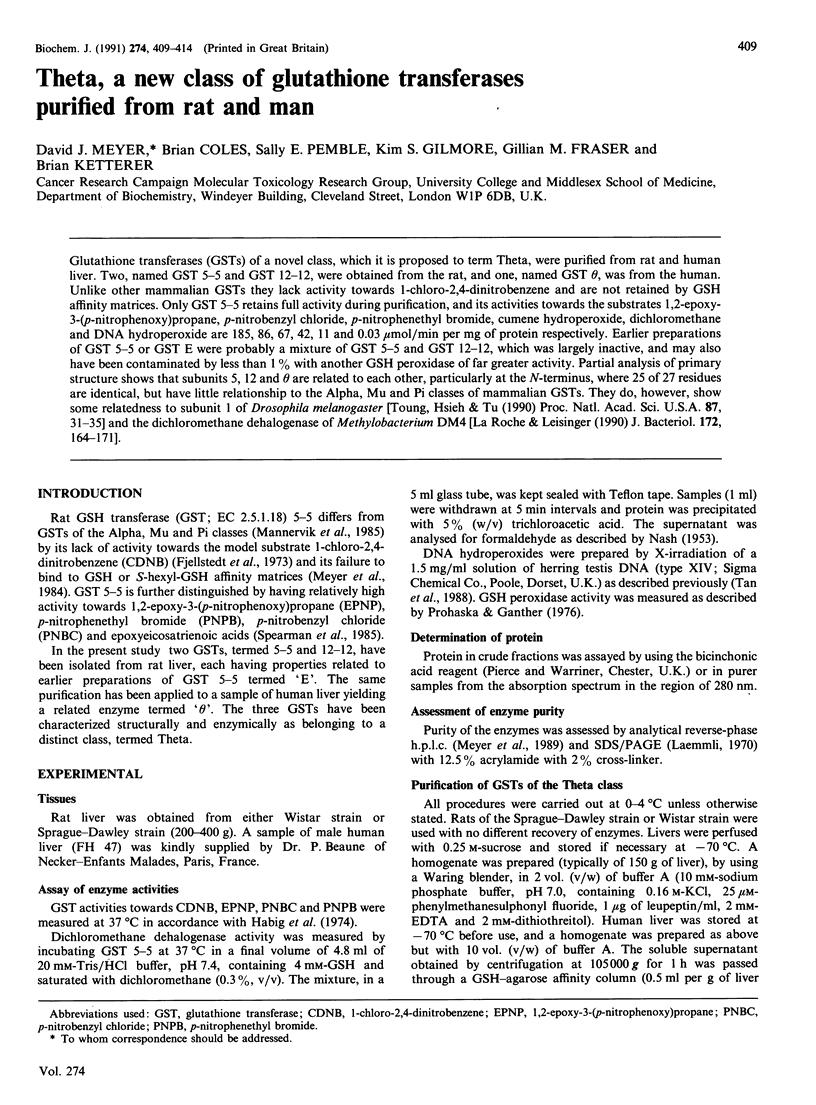
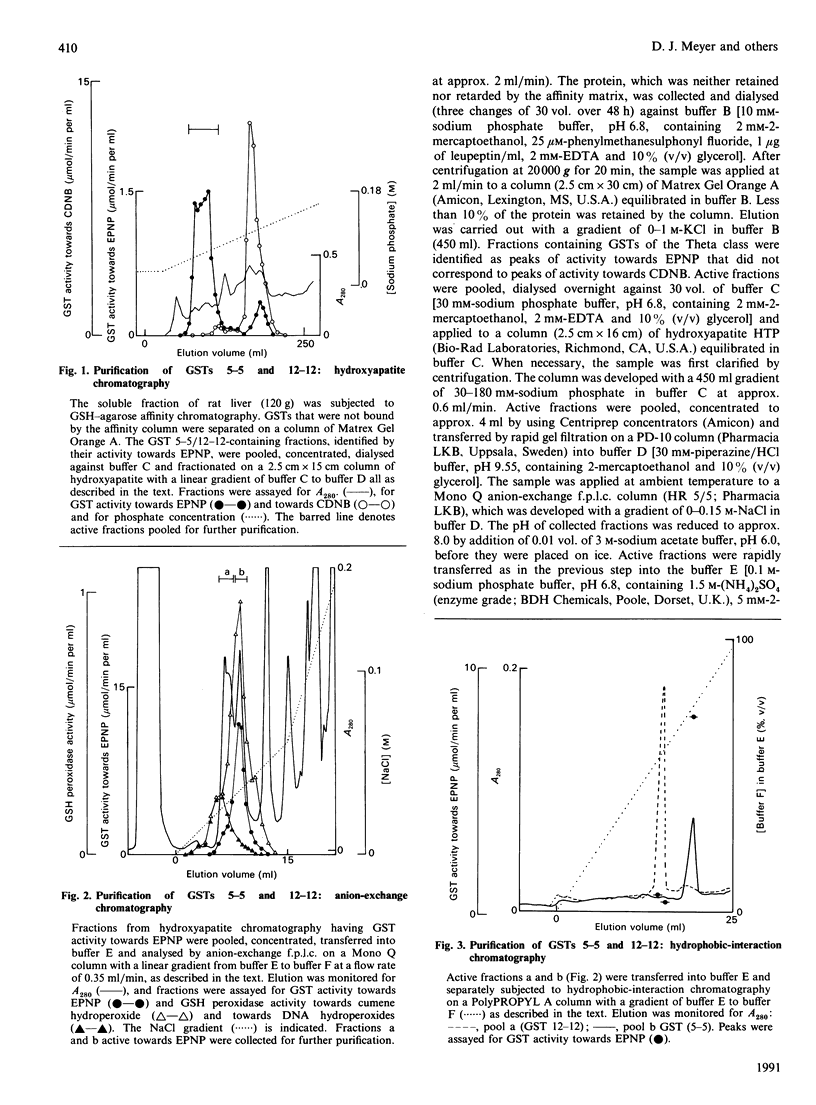
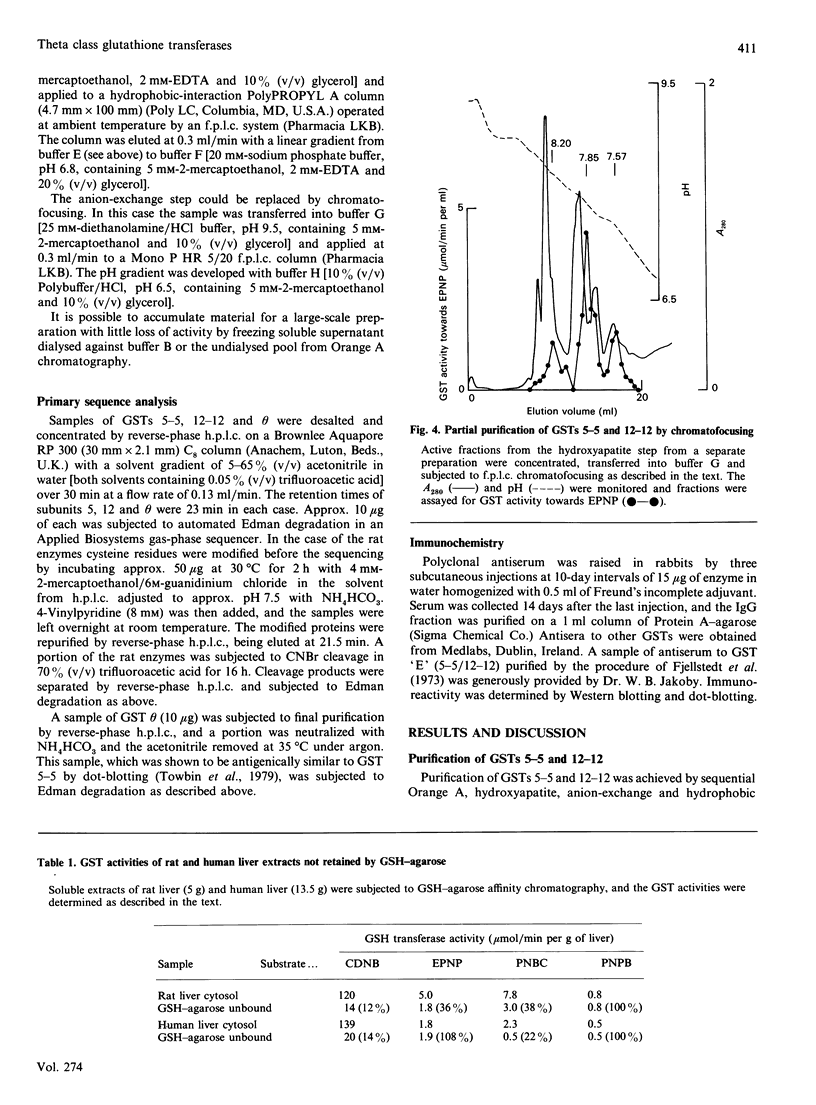
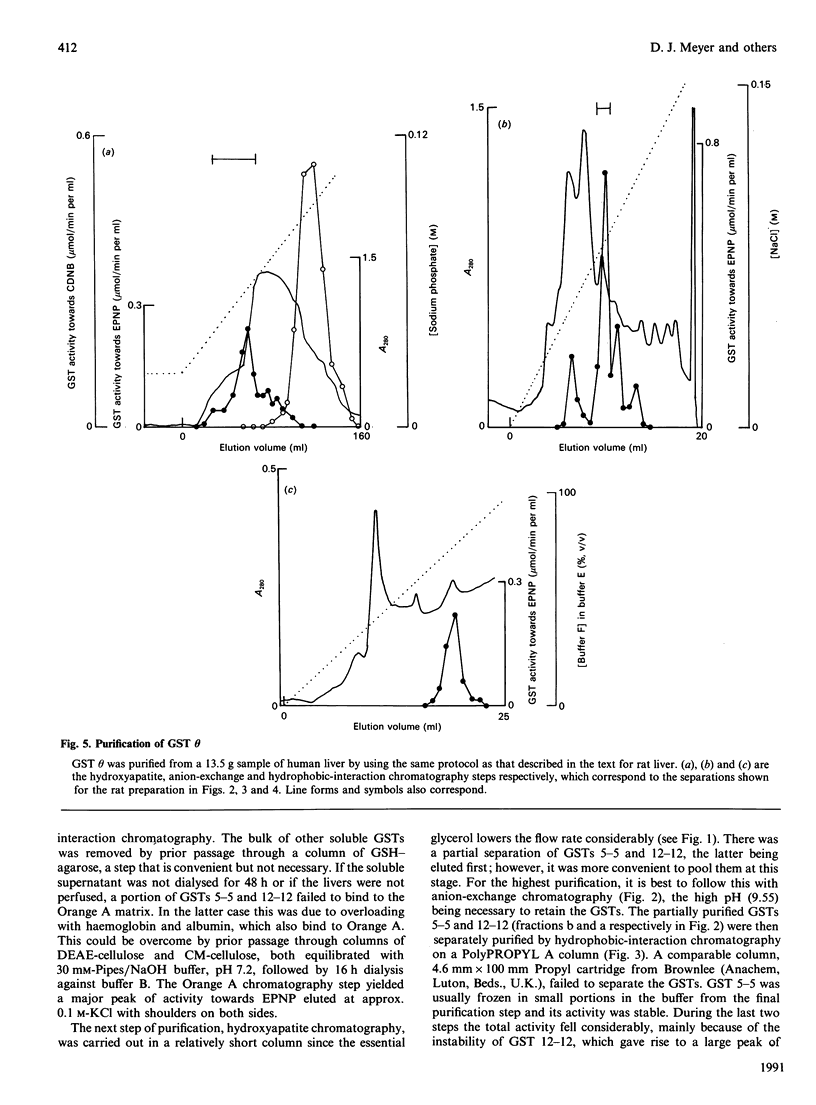
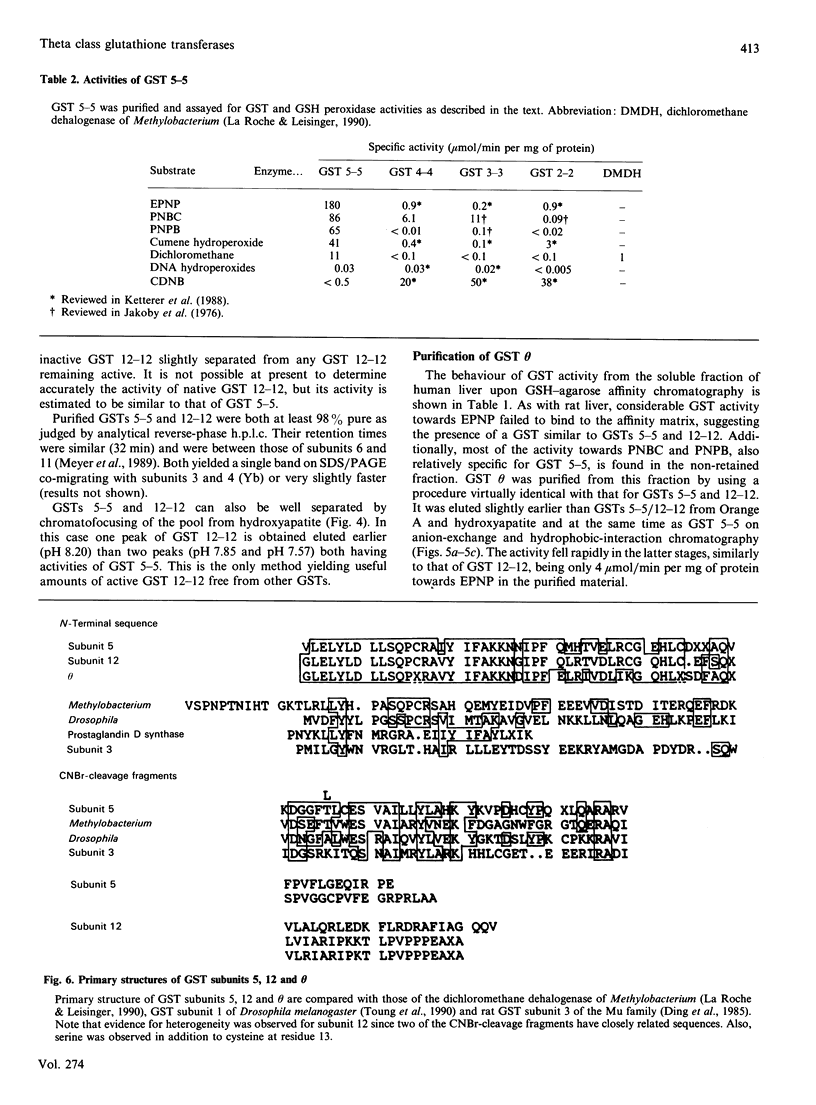
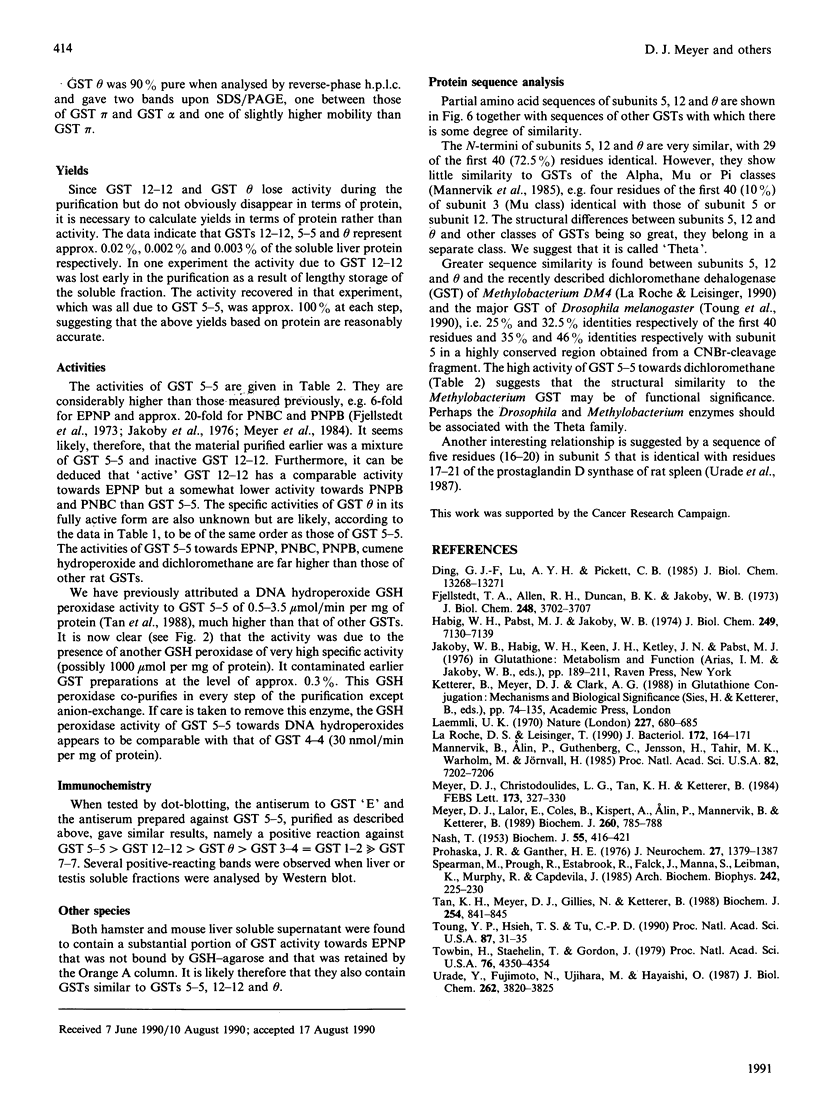
Selected References
These references are in PubMed. This may not be the complete list of references from this article.
- Ding G. J., Lu A. Y., Pickett C. B. Rat liver glutathione S-transferases. Nucleotide sequence analysis of a Yb1 cDNA clone and prediction of the complete amino acid sequence of the Yb1 subunit. J Biol Chem. 1985 Oct 25;260(24):13268–13271. [PubMed] [Google Scholar]
- Fjellstedt T. A., Allen R. H., Duncan B. K., Jakoby W. B. Enzymatic conjugation of epoxides with glutathione. J Biol Chem. 1973 May 25;248(10):3702–3707. [PubMed] [Google Scholar]
- Habig W. H., Pabst M. J., Jakoby W. B. Glutathione S-transferases. The first enzymatic step in mercapturic acid formation. J Biol Chem. 1974 Nov 25;249(22):7130–7139. [PubMed] [Google Scholar]
- La Roche S. D., Leisinger T. Sequence analysis and expression of the bacterial dichloromethane dehalogenase structural gene, a member of the glutathione S-transferase supergene family. J Bacteriol. 1990 Jan;172(1):164–171. doi: 10.1128/jb.172.1.164-171.1990. [DOI] [PMC free article] [PubMed] [Google Scholar]
- Laemmli U. K. Cleavage of structural proteins during the assembly of the head of bacteriophage T4. Nature. 1970 Aug 15;227(5259):680–685. doi: 10.1038/227680a0. [DOI] [PubMed] [Google Scholar]
- Mannervik B., Alin P., Guthenberg C., Jensson H., Tahir M. K., Warholm M., Jörnvall H. Identification of three classes of cytosolic glutathione transferase common to several mammalian species: correlation between structural data and enzymatic properties. Proc Natl Acad Sci U S A. 1985 Nov;82(21):7202–7206. doi: 10.1073/pnas.82.21.7202. [DOI] [PMC free article] [PubMed] [Google Scholar]
- Meyer D. J., Christodoulides L. G., Hong Tan K., Ketterer B. Isolation, properties and tissue distribution of rat glutathione transferase E. FEBS Lett. 1984 Aug 6;173(2):327–330. doi: 10.1016/0014-5793(84)80799-1. [DOI] [PubMed] [Google Scholar]
- Meyer D. J., Lalor E., Coles B., Kispert A., Alin P., Mannervik B., Ketterer B. Single-step purification and h.p.l.c. analysis of glutathione transferase 8-8 in rat tissues. Biochem J. 1989 Jun 15;260(3):785–788. doi: 10.1042/bj2600785. [DOI] [PMC free article] [PubMed] [Google Scholar]
- NASH T. The colorimetric estimation of formaldehyde by means of the Hantzsch reaction. Biochem J. 1953 Oct;55(3):416–421. doi: 10.1042/bj0550416. [DOI] [PMC free article] [PubMed] [Google Scholar]
- Prohaska J. R., Ganther H. E. Selenium and glutathione peroxidase in developing rat brain. J Neurochem. 1976 Dec;27(6):1379–1387. doi: 10.1111/j.1471-4159.1976.tb02619.x. [DOI] [PubMed] [Google Scholar]
- Spearman M. E., Prough R. A., Estabrook R. W., Falck J. R., Manna S., Leibman K. C., Murphy R. C., Capdevila J. Novel glutathione conjugates formed from epoxyeicosatrienoic acids (EETs). Arch Biochem Biophys. 1985 Oct;242(1):225–230. doi: 10.1016/0003-9861(85)90496-5. [DOI] [PubMed] [Google Scholar]
- Tan K. H., Meyer D. J., Gillies N., Ketterer B. Detoxification of DNA hydroperoxide by glutathione transferases and the purification and characterization of glutathione transferases of the rat liver nucleus. Biochem J. 1988 Sep 15;254(3):841–845. doi: 10.1042/bj2540841. [DOI] [PMC free article] [PubMed] [Google Scholar]
- Toung Y. P., Hsieh T. S., Tu C. P. Drosophila glutathione S-transferase 1-1 shares a region of sequence homology with the maize glutathione S-transferase III. Proc Natl Acad Sci U S A. 1990 Jan;87(1):31–35. doi: 10.1073/pnas.87.1.31. [DOI] [PMC free article] [PubMed] [Google Scholar]
- Towbin H., Staehelin T., Gordon J. Electrophoretic transfer of proteins from polyacrylamide gels to nitrocellulose sheets: procedure and some applications. Proc Natl Acad Sci U S A. 1979 Sep;76(9):4350–4354. doi: 10.1073/pnas.76.9.4350. [DOI] [PMC free article] [PubMed] [Google Scholar]
- Urade Y., Fujimoto N., Ujihara M., Hayaishi O. Biochemical and immunological characterization of rat spleen prostaglandin D synthetase. J Biol Chem. 1987 Mar 15;262(8):3820–3825. [PubMed] [Google Scholar]


